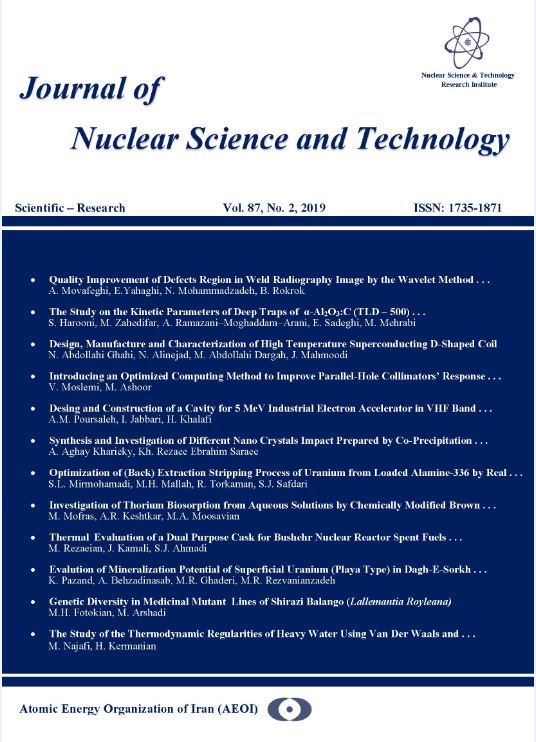Document Type : Research Paper
Authors
1 Plasma and Nuclear Fusion Research School, Nuclear Science and Technology Research Institute, AEOI, P.O. Box: 14399-51113, Tehran, Iran
2 Radiation Application Research School, Nuclear Science and Technology Research Institute, AEOI, P.O. Box: 11365-3486, Tehran, Iran
3 Department of Physics, Faculty of Basic Science, Damghan University, P.O. Box: 36716-41167, Damghan, Iran
Abstract
In the present work, the effect of the external magnetic field of on the energy deposition of the relativistic electrons into high density fuel of in fast-shock ignition concept has been investigated by using the Geant4 simulation toolkit. In our simulation model, two types of the energy distribution function including exponential energy distribution and quasi-two temperature energy distribution function, for relativistic electrons with an initial kinetic energy of were considered. The results of simulations in the presence of an external magnetic field show that the dynamics of the relativistic electrons are strongly affected by the external magnetic field which results in the optimum energy transfer into the fuel. The comparison of the results indicates that the optimal energy deposition is obtained for the density of in the presence of a magnetic field of about with an ignitor laser wavelength of and laser intensity of . It can therefore be concluded that by increasing the external magnetic field of , the energy deposition rate increases slowly.
Highlights
1. Hong-bo Cai and Shao-ping Zhu and X. T. He, Effects of the imposed magnetic field on the production and transport of relativistic electron beams, Phys. plasmas 20, 072701 (2013).
2. M. Hohenberger, et al., Inertial confinement fusion implosions with imposed magnetic field compression using the OMEGA Laser, Phys. plasmas 19, 056306 (2012)
3. D. J. Strozzi, et al., Imposed magnetic field and hot electron propagation in inertial fusion hohlraums, J. Plasma Phys, vol. 81, 475810603 (2015).
4. X. H. Yang, et al., Effects of external axial magnetic field on fast electron propagation, Phys. plasmas 18, 093102 (2011).
5. T. Johzaki, et al., Electron beam guiding by strong longitudinal magnetic fields, Journal of Physics: Conference Series 688 012041(2016).
6. S. A. Ghasemi, A.H. Farahbod, S. Sobhanian, Analytical model for fast shock ignition, AIP Adv. 4, 077130 (2014).
7. A. H. Farahbod, et al., Improvement of non-isobaric model for shock ignition, Eur. Phys. J. D., 68:314 (2014)
8. A. H. Farahbod, S. A. Ghasemi, Fast-Shock Ignition: A new concept to Inertial confinement fusion, Iranian J. Phys. Res.12,4 (2013).
9. S.A. Ghasemi, A.H. Farahbod, The Role of fast ignitor in fast-shock ignition concept, Iranian J. Phys. Res.13,4 (2013).
10. S.A. Ghasemi, A.H. Farahbod, Fast-Shock Ignition: A New Concept to Inertial Confinement Fusion, Bull. Am. Phys. Soc.58, 308 (2013).
11. S.A. Ghasemi, A.H. Farahbod, Electron Energy Deposition in Fast-Shock Ignition, Bull. Am. Phys. Soc.59, No. 1 (2014).
12. C. K. Li and R. D. Petrasso, Energy deposition of MeV electrons in compressed targets of fast-ignition inertial confinement fusion, Phys. plasmas 13, 056314, American Institute of Physics (2006).
13. K. Miyamoto, Plasma Physics and Controlled Nuclear Fusion, published by University of Tokyo Press (2004).
Keywords

